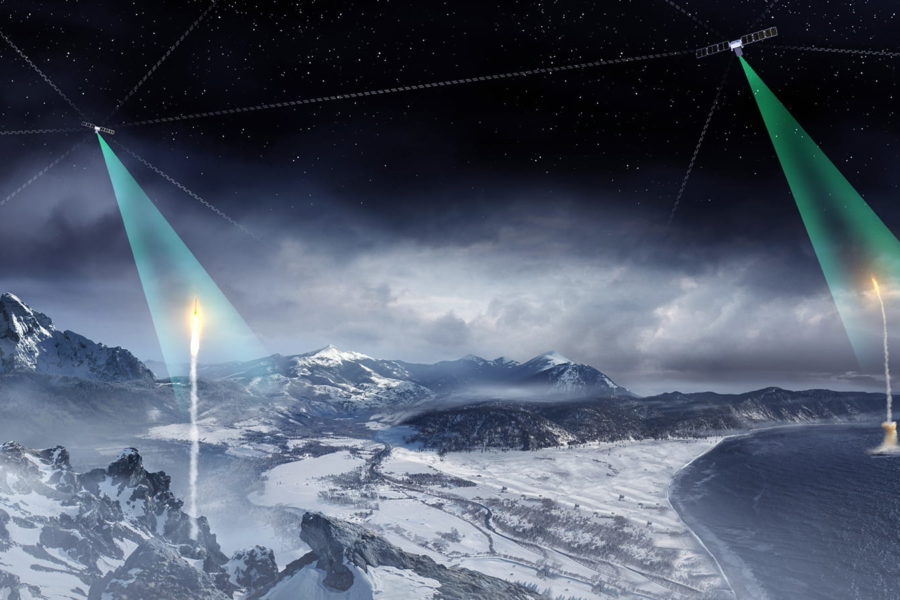The Space Development Agency has added another batch of missile-tracking satellites to its expansive constellation, awarding Raytheon a $250 million contract March 2 to build seven spacecraft.
Those satellites will join the already-planned 28 satellites in the Tranche 1 Tracking Layer of SDA’s Proliferated Warfighter Space Architecture—the initial contracts for Tranche 1 were issued in July, split evenly between L3Harris and Northrop Grumman Strategic Space Systems.
The increase in the tranche size is the result of funds added to the SDA budget by Congress, agency spokeswoman Jennifer Elzea told Air & Space Forces Magazine, referring to the Raytheon satellites as the fifth orbital plane of the tranche.
“This fifth plane award adds sensor diversity to our T1 Tracking constellation and achieved a price point of approximately $40 million per [satellite],” Elzea said. That price point is slightly lower than the contracts awarded to L3Harris and Northrop Grumman.
The extra satellites will launch in late 2025, Elzea said, after the other Tranche 1 Tracking Layer satellites, which are slated to begin launching in April 2025. That timeline is also thanks to added funding from Congress—previously none of the satellites had been planned for launch before 2026.
The Tracking Layer of the PWSA is intended to bolster the Pentagon’s ability to detect and track missile launches and flights. In particular, its position in low-Earth orbit will allow it to better track new threats like hypersonic missiles, experts say.
“Developing a resilient and affordable proliferated satellite constellation in low-Earth orbit will improve our ability to track emerging threats like hypersonic missiles,” Dave Broadbent, president of Space & C2 at Raytheon Intelligence & Space, said in a statement. “Continuing to develop this architecture with SDA and our industry partners will be a high priority for us in the coming months.”
Raytheon was one of the initial bidders for Tranche 0 of the Tracking Layer but lost out to L3Harris and SpaceX, who were selected to build four satellites each. Raytheon protested but lost.
This is the first time Raytheon has been selected to contribute any satellites to the PWSA—York Space Systems, Lockheed Martin, SpaceX, Northrop Grumman, and L3Harris are all building satellites as part of Tranche 0 and Tranche 1 of the Tracking Layer and Transport Layer.
SDA director Derek M. Tournear has emphasized the importance of avoiding vendor lock and spreading contracts among firms to encourage competition as more and more tranches are launched. He has said the agency’s plan is to launch new tranches every two years to continuously upgrade capabilities and proliferate the constellation.
The very first launches of Tranche 0 are slated to begin this month after a delay caused by “careful analysis and … input” from contractors, officials said.
Tranche 0 is slated to include 28 satellites in total—20 in the Transport Layer, responsible for communications and data transmission, and 8 in the Tracking Layer, for missile tracking and warning. Tranche 1 is now set to include 126 satellites in the Transport Layer, 35 in the Tracking Layer, and still others for experimentation.
